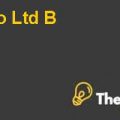
Industry Analysis
The industry analysis will reflect the industry’s situation using the porter’s five forces.
Bargaining Power of Buyers
The bargaining power of buyers is relatively high as the consumers have options to switch and the switching cost is not very high therefore, buyers can easily bargain at prices. Furthermore, the product differentiation is not very high and the products which are being served by a certain coffee house are being served in other coffee houses as well.
Bargaining power of suppliers
The bargaining power of suppliers is built to be low because the presence of cartelization is almost minimal or absent in the industry. Furthermore, limitations and regulations have been enforced regarding the prices of goods like milk and sugar by the government and other regulatory bodies that have restricted the suppliers from bargaining high. On the other hand, companies or coffee houses are involved in backward integration, which has kept the suppliers power to bargain at its lowest.
Threat of new entrants
In India, there are established brands in the coffee industry including some global along with local and native brands and have a considerable amount of market share. This situation reflects that new entrants are not welcomed by the competition, but the growth rate of the industry may attract new players to explore the market. On the other hand, the initial start-up cost and other related cost are quite high which means that new entrants with huge investments can gain the entry in the market. The entire situation suggests that the threat of new entrants is medium.
Threat of substitutes
India is considered as a foodie nation and the people in India are addicted to tea and other beverages. The concept of coffee is not vintage in India, but still the industry is quite lucrative. Whereas, the presence of several beverage brands and tea shops and tea brands suggests that the threat of substitutes is very high and the switching is also low which intensifies the threat.
Industry rivalry
The presence of some domestic and international brands in the market makes the rivalry in the industry very intense and the competition very high. Furthermore, the new international leaders in the industry are entering the Indian market making the competition fiercer.
Financial Analysis
Exhibit 1 at the bottom shows the worth or the value of the current Indian coffee market and its growth rate. Besides that, it also reflects the value of the market for the next five years as well, which suggests that the industry is highly lucrative. The growth rate shows that the consumers are switching towards specialty coffee. In addition to this, CCD is known to be a leader in the Indian coffee market with having largest number of retail chains in India. (Please refer to exhibit 2). Currently, the earnings before income and taxes EBITDA of the company is found to be $1872 that is higher than any other coffee retail chains in India (Exhibit 2). Exhibit 3 at the bottom reflects the sales of the Café Coffee Day in various product types. Most of the sales come from the beverage sectors that account for 60% of CCD.
Alternatives
Differentiating brands is an essential need of the brand especially in today’s environment, and the company must form a differentiation strategy to make sure that its brand survives and also sustains its segment within the market. CCD needs to form a Unique selling proposition which is creating products and service which provides something that no other firm can provide. This proposition is unique in its approach, and they attract a particular segment of the market that they would come to them because of that particular offering. Café coffee day would mean in providing a unique environment that would be different from all the other providers of coffee in the Indian market.
However, there have been concerns about this concept having become redundant as if applied to our case study we can see that the product, i.e. is coffee cannot be differentiated to a great extent as in the end, most of the café’s would have similar coffee beverages and the environment shares certain generic assumptions of fun and relaxation thus, that too can be differentiated only to a certain extent. Therefore, creating a USP no longer means a competitor free product rather in time rivals will be able to match the product and even provide better.
CCD can also create a different category for their brand rather than being simply a “café” they need to carve out a specific category for which they would be identified for...............................
This is just a sample partial case solution. Please place the order on the website to order your own originally done case solution.












